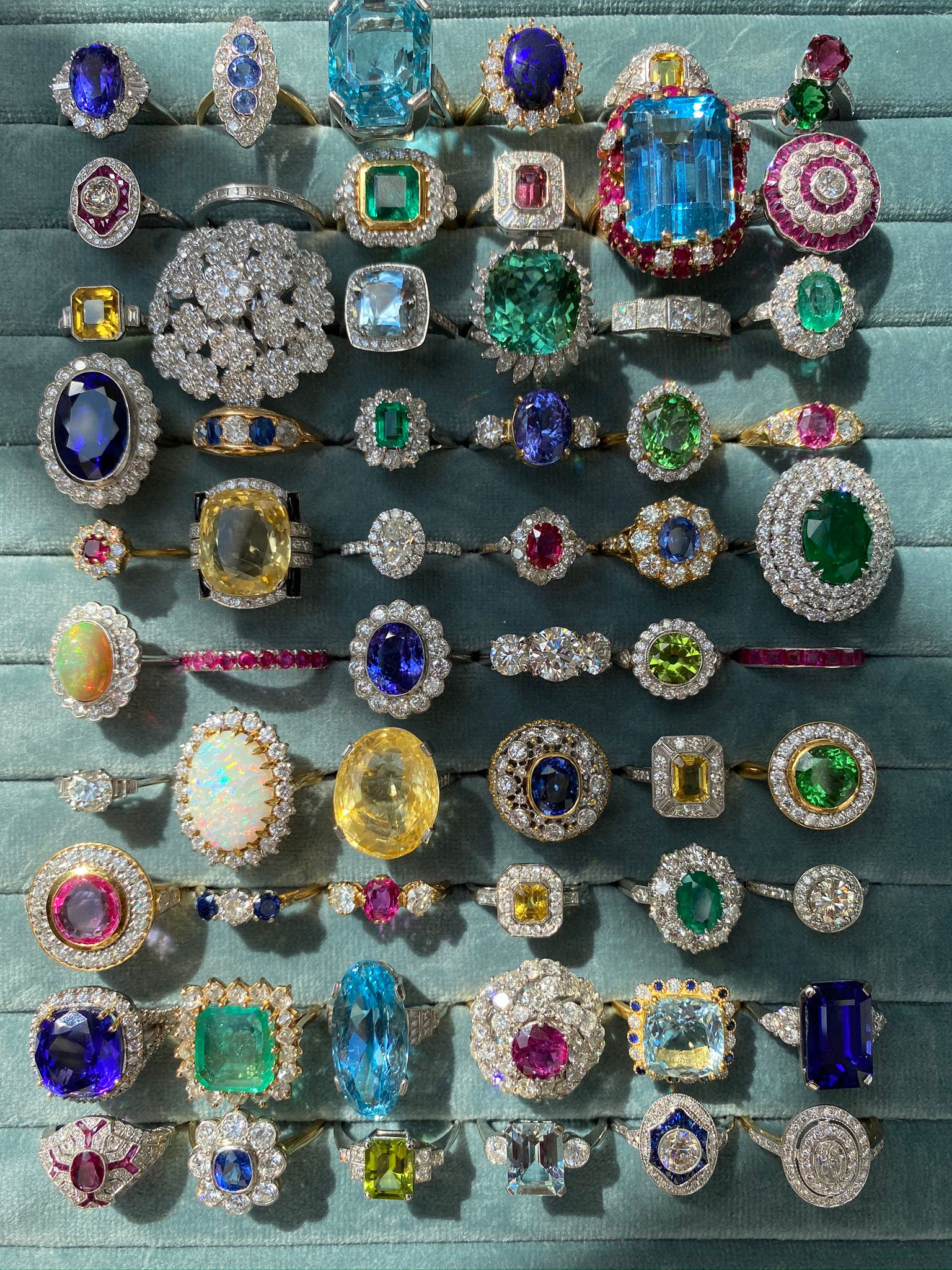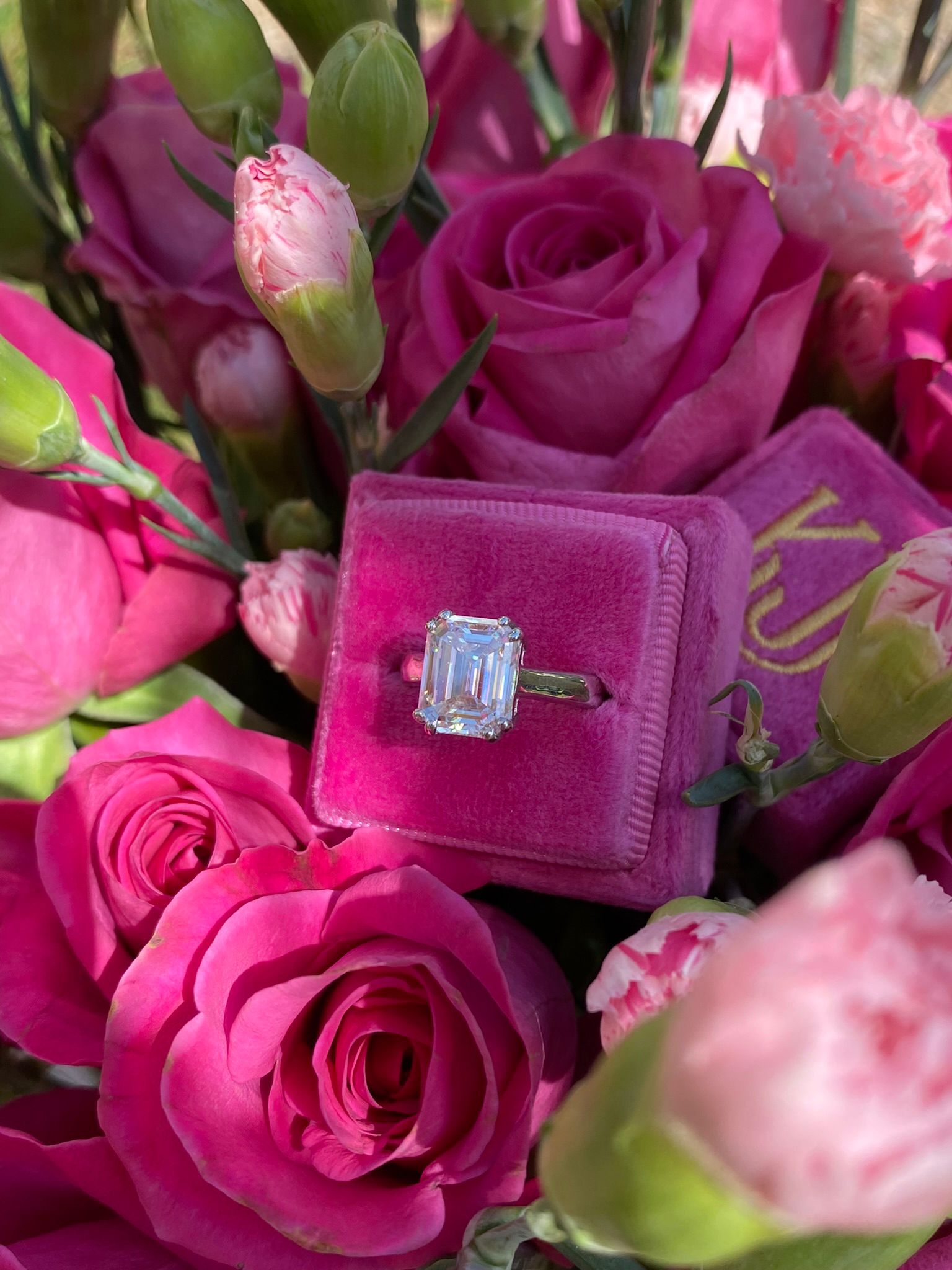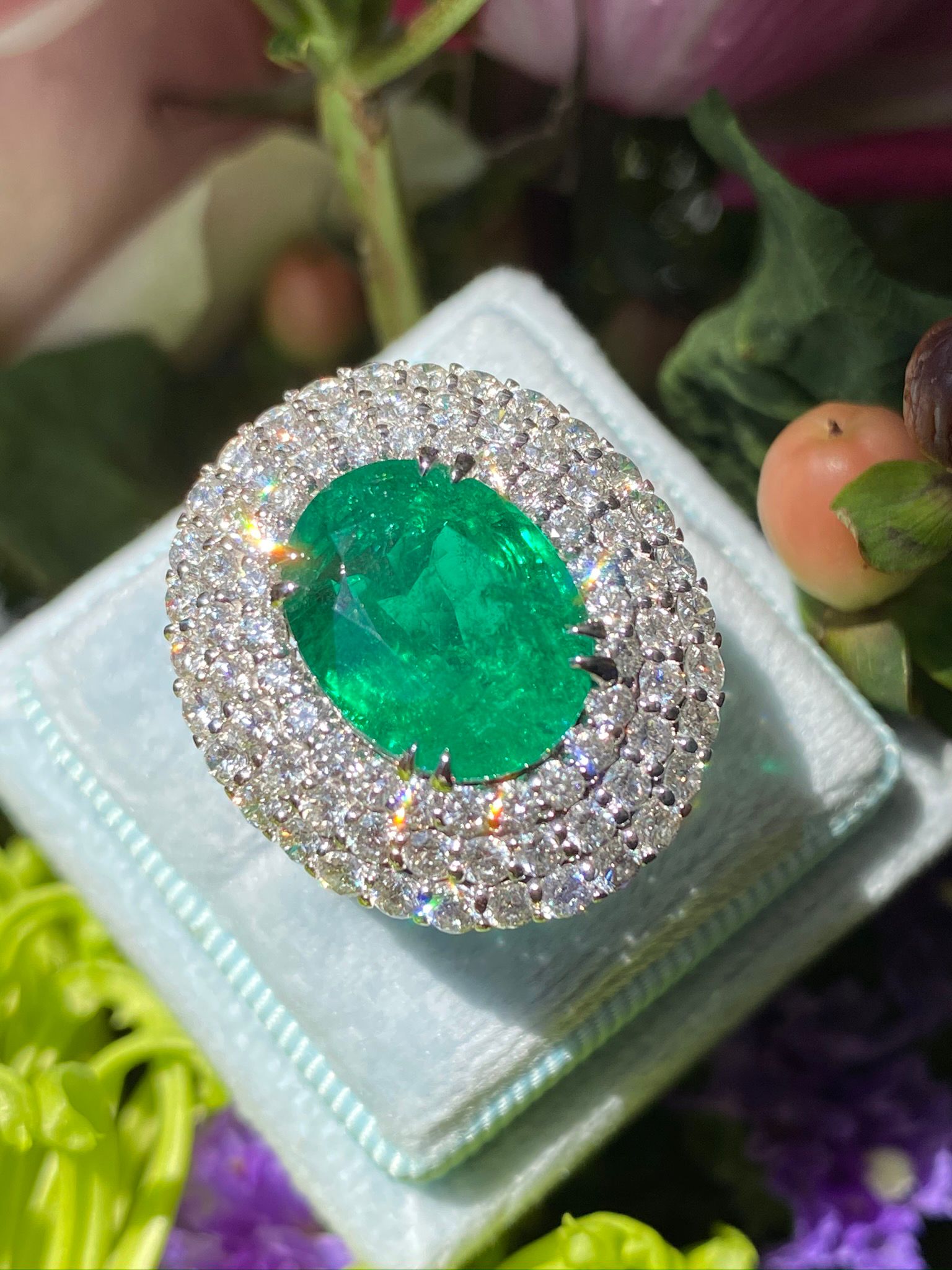10 Things You Didn't Know About Diamonds
Uncover the little known facts about the world’s most famous precious gem.
1. India was Once the Diamond Centre of the World.
Until the 1730s, the Golconda region of India was the only source of the Earth’s Diamonds. Golconda Diamonds are still revered to this day and include many of the most famous specimens, including the 105.6 carat Koh-i-Noor, which is now part of the British Crown Jewels, and the infamous Hope Diamond, which was donated to the Smithsonian by Harry Winston in 1958. Diamonds were later found in Brazil as well, and remained in supply until around 1870.
Learn More About the History of Diamonds with our YouTube Video
2. Standard Diamond Engagement Rings Weren’t Popularized Until the 1940s.
Significant deposits of Diamonds weren’t discovered until the late 1800s. Until then, the tiny supply of global Diamonds were reserved for the world’s wealthiest citizens and royalty. Cecil Rhodes, founder of De Beers Consolidated Mines, knew he needed to reintroduce the idea of owning Diamonds to the general public in order to meet the new, more abundant supply of gems being mined in South Africa. He hired advertising agency N.W. Ayer in the 1930s, who successfully continued to associate Diamonds with love and romance. In 1948, Frances Garety, a female copywriter at the agency, came up with the now famous slogan which would become a billion dollar idea: “A Diamond is Forever.” De Beers eventually quietly changed the slogan to “Diamonds are Forever,” which they continued to use in campaigns right up until 2011.
3. Diamonds Have the Same Chemical Composition as Pencil Lead.
Diamonds are the only gems on Earth which are simply composed of only one chemical element: Carbon. (Emeralds, for example can contain Beryllium, Aluminium, Silicon, Oxygen and Chromium.) They usually contain 99.95% Carbon, while the last 0.05% is sometimes made up of trace elements which can help create coloured Diamonds. So, how can the graphite of a pencil lead be as soft as chalk, while Diamonds are famously one of the hardest substances on Earth? Their atomic structures are completely different, i.e. the bonds between their Carbon atoms differ greatly. Diamonds formed hundreds of millions to billions of years ago about 100 miles below the planet’s upper mantle. The nature of their environment, including the extreme heat and pressure in which they were formed, all helped to determine their eventual indestructibility.
4. Today, Many Diamonds are Mined in Highly Remote and Inhospitable Locations.
Diamonds finally made their way closer to the Earth’s surface thanks to very deep-seated, violent volcanic eruptions that likely occurred in prehistoric times. Now, they’re mined in some very difficult to access areas, including the arctic tundra of Canada’s Northwest Territories and below the Atlantic Ocean off the coast of Southern Africa. The difficulty and extreme expense of unearthing Diamonds is one of the many reasons they hold such high value. In general, it takes one metric ton of ore to find only 0.30 carats of rough Diamonds. While it’s estimated that 80% of coloured gemstones are mined in independent and small-scale operations, almost all Diamonds are mined in massive industrial operations due to the immense scale of work that is required. As such, and in combination with the Kimberly Process, which was introduced in 2003, Diamonds have become nearly entirely traceable back to their original, conflict-free sources.
5. Diamond Cutting is a Very Recent Invention.
Three of the famous “4 C’s,” including Colour, Clarity and Carat Weight, were part of the original Diamond Grading System established over 2000 years ago in India. Diamond cuts, however, took thousands of years to be invented and establish their importance in the overall appearance of a gem, since figuring out how to split, grind, and polish such a hard material was such a monumental task. Learn more about the history of Diamond Cuts here.
“[Diamonds are]…the most valuable, not only of precious stones, but of all the things in this world.”
– Pliny, a Roman Naturalist, 1st Century AD
6. Most Diamonds are a Shade of Yellow or Brown.
The Diamond colour grading system was invented in the 1950s by Richard T. Liddicoat at the GIA. It grades all Diamonds on an alphabetical scale from Colourless (D) to Light Yellow, Brown or Grey (Z). (Before this universal system was introduced, many dealers graded the quality of their Diamonds A, B, or C, which is why those letters weren’t included on the new scale, in hopes of avoiding confusion.) Finding Diamonds with hardly any traces of Yellow or Brown, especially over one carat is so scarce that it compounds the value of gems in the colourless (D-F) and near colourless ranges (G-I). Learn more about Coloured Diamonds.
7. “Imitation” and “Synthetic” Diamonds are Not the Same Thing.
Materials used to imitate Diamonds in jewellery such as colourless Quartz, Sapphire, glass, or synthetic gems such as Cubic Zirconia are referred to as “simulants” or “imitations.” “Synthetic Diamonds” or lab-grown Diamonds have the exact same chemical composition and properties as a natural Diamond and cannot be told apart with the human eye alone. In fact, they now have such sophisticated compositions that they often need to be sent away to a Diamond and Gemstone lab in order to be identified as lab-grown.
8. Modern Carat Weight was Proceeded by Carob Seeds.
In ancient times, carob seeds, which grow in pods on locust trees, were considered a fairly consistent method for determined gem weight. Since they grow in uniform size and weight, they were used universally as counterweights on hand-held balance scales when purchasing and trading Diamonds. Now, one metric carat is equal to one fifth (or 0.002) of a gram. One ounce is equal to 142 carats. While most people closely associate carat weight to their desired size of Diamond, it’s important to remember that due to varying Diamonds cuts, weight and size are not always consistent. Instead, a gem’s measurements and dimensions can give you the most accurate idea of how large a gem will look in a setting or on your body. Because of their elongated shapes, fancy cuts such as Pears, Ovals, Emerald-cuts, and Marquises tend to look the largest. Carat Total Weight (CTW) will tell you the combined carat weight of all gems included in a jewel’s setting, instead of just the weight of one individual stone.
9. Most Gems Cannot Compete with a Diamond’s “Fire.”
Aside from its impeccable hardness, “fire” is one of Diamonds’ most exclusive and distinguishing attributes. Due to its high refractive index, white light is effectively reflected off the facets of the Diamond into “spectral light,” a.k.a the gorgeous colours of the rainbow. This effect, which is also called dispersion, results in that magical sparkle that few other gemstones have, and make Diamonds so famously mesmerizing and sought-after. Which gem is the only one that has more fire than a Diamond? Moissanite.
10. Diamonds are Drawn to Grease like Moths to a Flame.
Diamonds are hydrophobic, which means they naturally repel water. However, it also means they also have a natural affinity to grease and oil. This means they can very easily pick up oil from your hands, which will quickly start to collect dirt and dust. No, thank you. Avoid dulling the sparkle of your prized gems by cleaning your Diamonds multiple times a week with a soft baby toothbrush, warm water, and a mild dish soap. It’s also safe to have them cleaned in a jeweller’s ultrasonic cleaner (which cleans appropriate jewels with high frequency sound waves), steam cleaners, and even your personal pulsed water dental flosser! Just remember that Diamonds are harder than the Precious Metals that hold them, so they can wear through their settings over long periods of time. Always keep an eye on the condition of your jewels and have them inspected regularly by your jeweller and re-set as needed. Click here for more Jewellery Cleaning tips.
Learn More about Lab-Grown Diamonds
Shop the Diamond Collection





